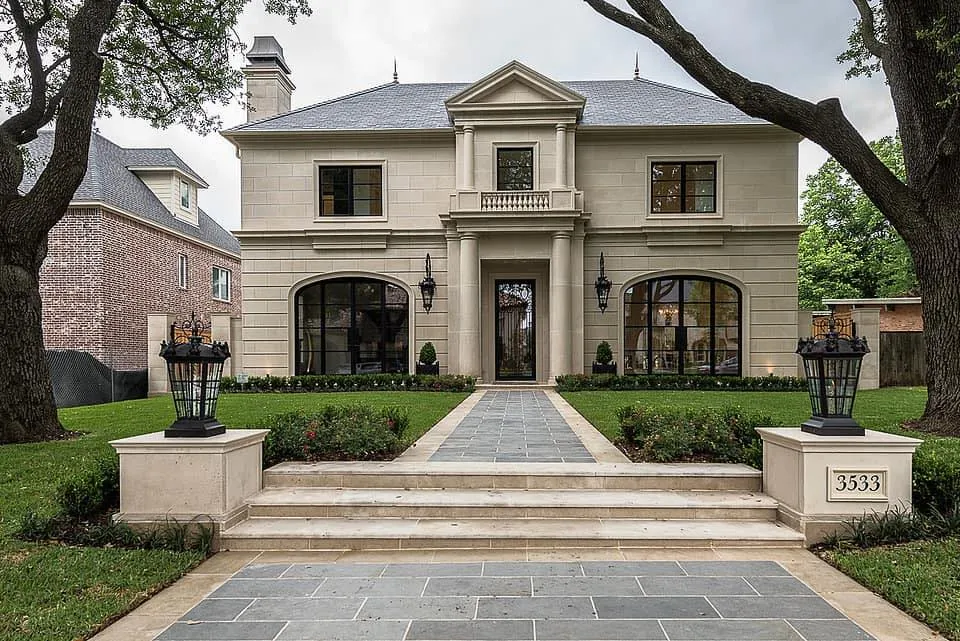Precast concrete has emerged as a leading choice in the construction industry with massive appeal to commercial and high-end builders, architects, and landscape designers. Besides offering design flexibility, cost-savings, and low maintenance, its eco-friendly and resource-efficient qualities provide sustainability and numerous benefits to the environment. In this article, we will explore 7 environmental benefits related to the use of precast and its variant called stone cast in the building industry.
1. Reduced Waste Production
Because precast manufacturing is performed in a controlled factory setting using precise measurements, construction waste is reduced. This is unlike on-site concrete mixing where excess materials produce more waste. The greater efficiency with which precast manufacturing occurs minimizes the need for waste disposal that impacts landfills.
2. Energy Efficiency in Production
Controlled factory conditions that optimize the curing process are combined with the use of energy-efficient machinery in precast manufacturing. This makes the production of precast concrete products energy-efficient. Besides the manufacturing process, the use of thermal mass in precast concrete wall panels helps to regulate the indoor environment. The result is energy savings from a reduction in heating and cooling requirements.
3. Longevity and Durability
As a natural building material, the sustainability of precast is unmatched. It is durable, long-lasting, and with some manufacturing processes, virtually maintenance-free. Precast concrete is known for its ability to withstand extreme environmental conditions including heat and freezing temperatures, high humidity, floods, hurricane-force winds, and fires. Besides cost savings from fewer replacements and repairs over time, the environmental footprint is reduced by lowered resource consumption and building maintenance requirements.
4. Recyclability and Reuse
The ability to recycle precast for manufacturing of new precast concrete products makes it highly environmentally friendly. At the end of its life cycle, the recycling process involves crushing the precast concrete and using it as an aggregate for new concrete products. The result is an environmentally friendly and sustainable closed-loop manufacturing system that saves money and prevents a sole reliance on new materials. Although not an exclusive practice, many precast concrete manufacturers make use of recycled materials in their production process.
5. Reduced Transportation Impacts
Because precast manufacturing occurs off-site and is transported to the job site where it is used, it eliminates the need for the transportation and costs of traditional concrete mixing across great distances. Some associated benefits are decreased fuel consumption and emissions. The need to transport precast concrete is also reduced because of its durability with fewer replacement requirements.
6. Improved Building Performance
As a natural building material, precast concrete wall panels are an excellent insulator with a thermal mass that can help to regulate indoor temperatures. This results in less reliance on heating and cooling systems for building interiors. Over the lifespan of the building, the result is energy savings and reduced greenhouse gas emissions.
7. Use of Sustainable Materials
Many precast concrete manufacturers are committed to green building standards and certifications that assure a better quality precast and reduce negative impacts on the environment. Their manufacturing process involves the use of sustainable materials such as recycled aggregates, industrial by-products, and low-impact additives.
Conclusion
Precast concrete products offer a multitude of environmental benefits, making them a superior choice for sustainable construction. From reduced waste and energy efficiency to durability and recyclability, energy savings, and reduced transportation fuel emissions, precast product production supports eco-friendly practices and contributes to a lower environmental footprint.
Why DC Kerckhoff is Your Best Choice for Sustainable Precast Solutions
DC Kerckhoffis a leader in the precast concrete industry, providing high-quality, eco-friendly solutions that exceed the standard specifications for strength, durability, and non-absorption of water. All precast and stone cast products manufactured by DC Kerckhoff are engineered to meet and surpass APA Certified requirements, ensuring exceptional performance in all weather conditions.To explore how our precast concrete products can benefit your next project and contribute to your sustainability goals, request a free consultation with DC Kerckhoff today. Click to complete the contact form or call us at 239-597-7218 for more information. We look forward to helping you achieve your environmental and design objectives.
Benefits of Precast FAQs
Q1: What are the environmental benefits of using precast concrete?
A1: Precast concrete offers several environmental benefits, including energy efficiency, reduced waste, and a lower carbon footprint. Its durability and low maintenance requirements also contribute to its sustainability.
Q2: How does precast concrete compare to other building materials in terms of sustainability?
A2:Precast concrete provides several environmental benefits over natural building materials like granite, marble, sandstone, slate, travertine, or limestone. Its manufacturing process is highly efficient, often incorporating recycled materials and minimizing waste. Precast concrete’s durability reduces the need for frequent replacements, lowering its overall environmental impact. It also boasts excellent thermal efficiency, helping to reduce energy consumption for heating and cooling. Additionally, using precast concrete can minimize land disruption compared to the extraction and processing of natural materials. Overall, precast concrete supports sustainable building practices while offering practical and environmental advantages.
Q3:Are precast concrete products considered natural building materials?
A3:Yes, precast concrete products can be considered natural building materials because they are made from abundant natural resources such as cement, aggregates, and water.
Q4: How do precast concrete manufacturers contribute to environmental sustainability?
A4:Precast concrete manufacturers contribute to environmental sustainability by using efficient production processes, recycling waste materials, and producing durable products that reduce the need for frequent repairs and replacements.
Sign up to get unlimited and immediate technical documents, requests for quotes, and helpful support from our experienced team.
Sign up
